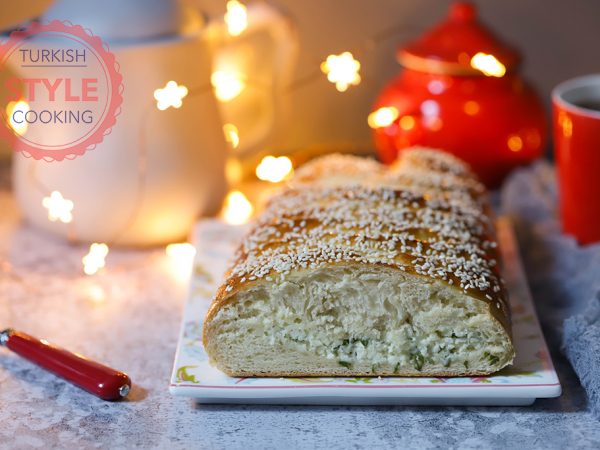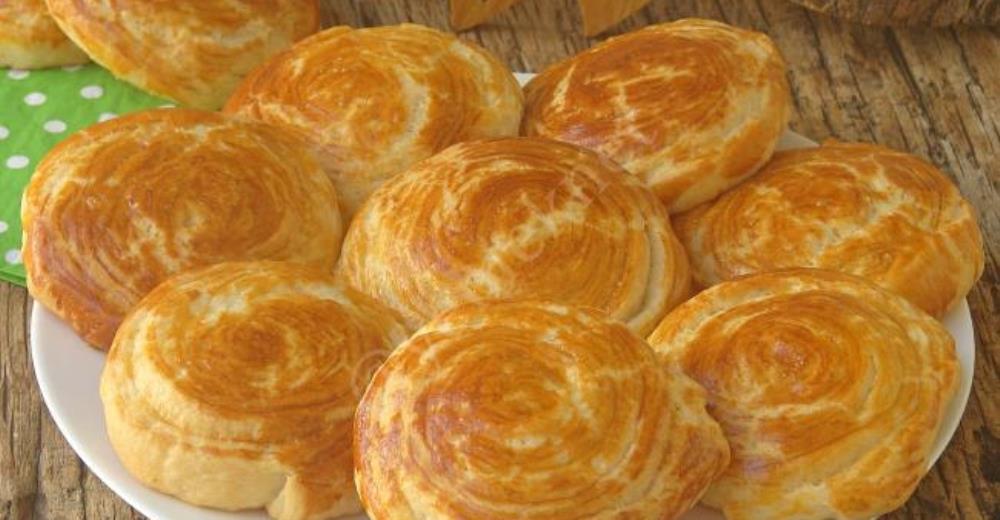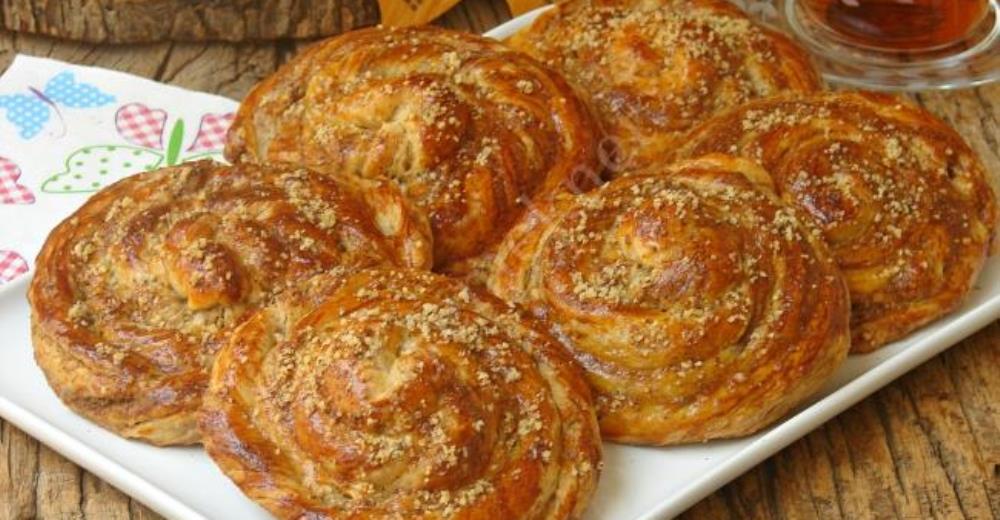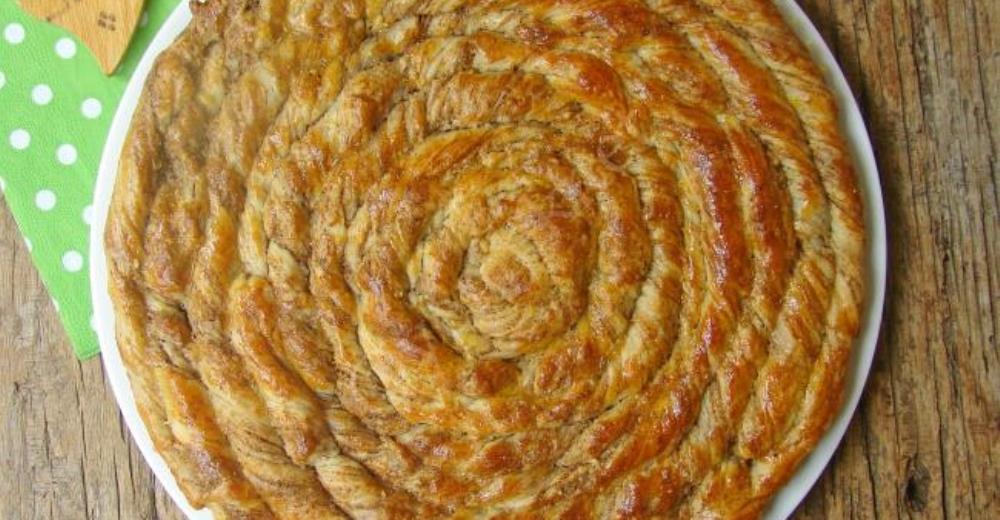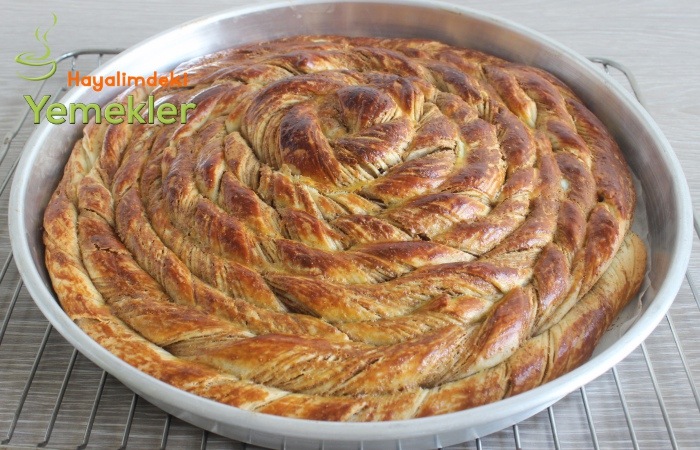Çörek
corek, tsoureki
Tsoureki also known as šurēk (Hijazi Arabic: شُريك), cöreg, čʿorek, katʿnahuncʿ (Armenian: չէօրէկ, չորեկ, կաթնահունց), çörək (Azerbaijani), çyrek (Albanian), kozunak (Bulgarian: козунак), cozonac (Romanian) or paskalya çöreği (Turkish) is a sweet holiday bread made with flour, milk, butter, eggs, and sugar and commonly seasoned with orange zest, mastic resin, or mahlab. Lampropsomo, a variation of tsoureki commonly called "Greek Easter bread," is made by Greek communities during Easter, not only in Greece, but also in other countries with Greek communities. It is also called Armenian Easter bread and gets eaten during Easter in Armenia and the Armenian diaspora. The Greek word tsoureki is derived from the Turkish word çörek, meaning "round bread" in Old Turkic. Some dictionaries claim that this is derived from the Old Turkish root çevir- 'turn' or 'to make it round'.[better source needed] The ancient Armenian name was "bsatir - պսադիր" ("bsag պսակ" - "crown" and "tir դիր", is the root of "tnel դնել" verb: "to put"). This Armenian name is in allusion to Christ’s crown of thorns. There are different variations of the Greek tsoureki holiday breads including a round Christmas loaf with a cross decoration called Christopsomo, a braided Easter bread with whole dyed eggs pressed into the dough called lampropsomo, and a loaf with a coin hidden inside for good luck called vasilopita that is baked for St. Basil's Day (New Year's Day).
Source: Wikipedia

